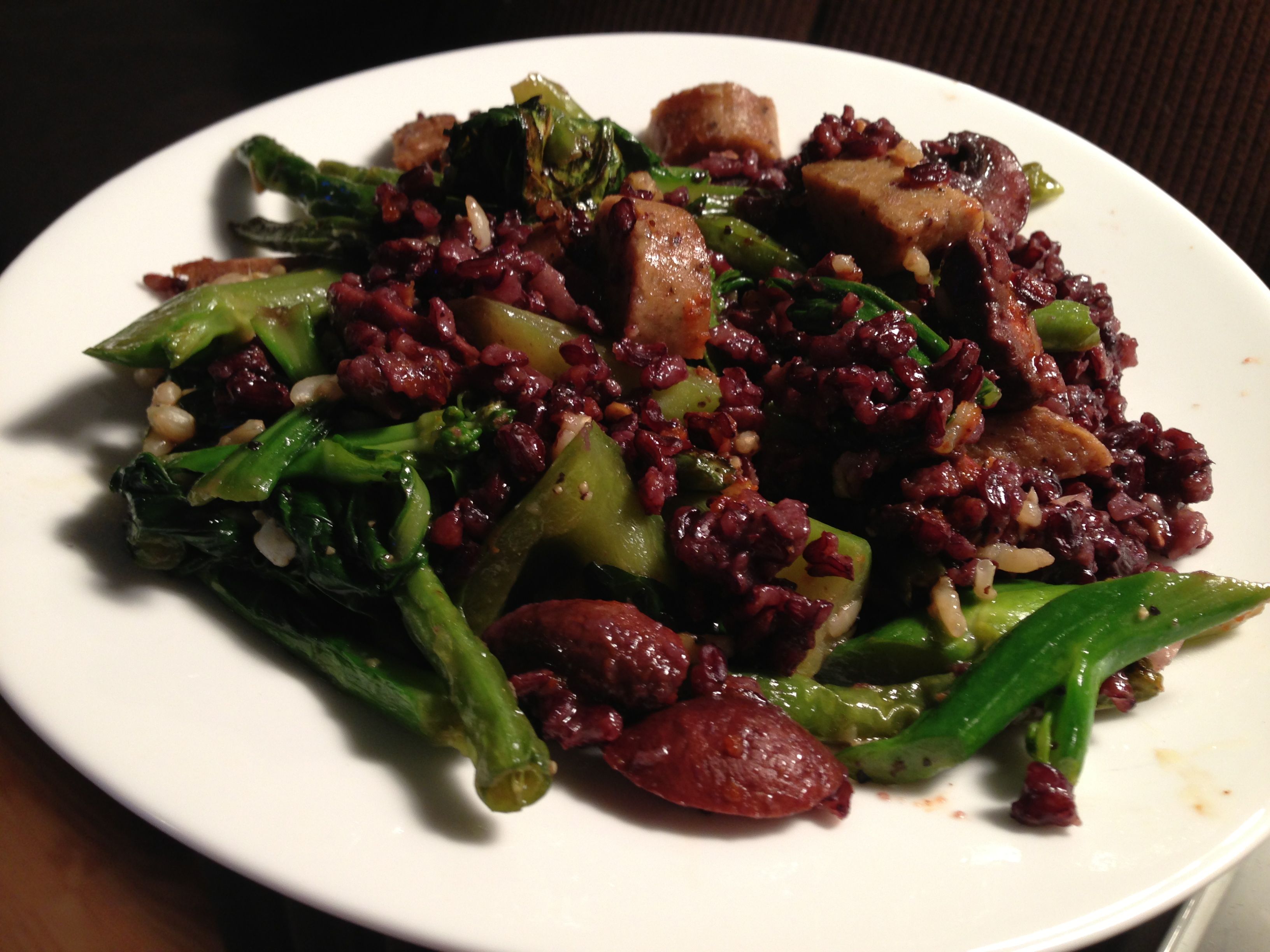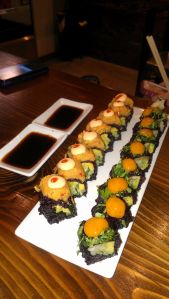Forbidden Black Rice with Asparagus

Forbidden? Yes.. and impossible to find! Well.. not really once you learn what it is. I usually find that when I come across a new food that I didn’t even know exist, that I soon after begin to see it everywhere. This was so the case with black rice. I heard about it though a friend on Facebook. It looked intriguingly delicious to me and of course I wanted to try it immediately. Soon after, I ran right into it at the health food store. I actually can’t believe I haven’t blogged this before. I am certain that I have created a few recipes with black rice, experimented and even took pictures. Not a problem- here I am again cooking with black rice and also amazed that I am beginning to see it in restaurants which I will highlight later – “Beyond Sushi”!
Where do they get “forbidden” from? Once you read that on the label- you automatically want it! It comes from Chinese tradition where only royalty were given this type of rice to eat, hence it was forbidden. So what is black rice? It’s actually a strand of rice with a very dark purple quality. It gets this color from anthocyanins, which are flavonoid pigments found in red/ purple/ dark blue/ black fruits and vegetables. Do you remember when someone told you to eat the colors of the rainbow in your fruits and vegetables? This is part of that wonderful concept and truth.
Some of the current benefits of anthocyanins include: “protection against liver injuries; significant reduction of blood pressure; improvement of eyesight; strong anti-inflammatory and antimicrobial activities; inhibition of mutations caused by mutagens from cooked food; and suppression of proliferation of human cancer cells.” (Konczak/ Wei)
Black rice is therefore high in antioxidants from these anthocyanins! In addition, black rice is also known for it’s anti-inflammatory properties. Many believe inflammation to be at the core of many health conditions, disorders and diseases.
White rice is refined and milled therefore stripped of it’s many nutrients. Brown rice and black rice are very similar with respect to nutrients, calories and fiber. The added bonus here, is that black rice has extra antioxidants. Personally, you might want to make your own decision when choosing. I mostly eat brown rice, however, when black rice is available to me- I will always say yes. I enjoy the texture and taste- and I feel that it is a bit healthier. Try it and see what you think and feel!
I made my black rice as I would brown; cooking it in a 2:1 ratio of water to rice with a drizzle of olive oil and touch of sea salt. I sautéed asparagus on the side, some sliced apple sausage (soy) and some leftover brown rice and mushroom from the night before. Yes I mix and match! This dish was incredible!
I have to mention that I am beginning to see black rice as an option in some sushi restaurants in New York CIty. This is very exciting especially this new sushi spot that I stumbled upon. It’s called BEYOND SUSHI– located on 14th Street, Manhattan between 3rd and 2nd Avenues. Honestly, this is the best sushi I have ever had. My taste buds are slowly changing and for the better. It takes time when eliminating certain foods and dependencies on salt and sugar. I have had this sushi twice so far- the best is having it in-house but GOOD LUCK as it is mostly a to-go place. Oh.. and did I mention- it’s VEGAN! Bonus!
Reference
Konczak, I., Wei, Z. 2004. Anthocyanins- More Than Nature’s Colours. Journal of Biomedicine and Biotechnology. Retrieved from http://www.ncbi.nlm.nih.gov/pmc/articles/PMC1082903/

